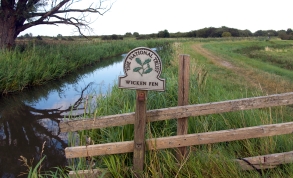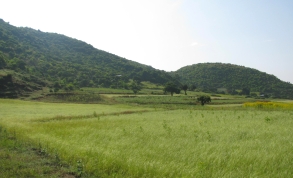Related Content

Livelihood benefits
Changing ecosystem service values in a UK wetland

Food security
REDD+ is a framework for activities in the forest sector that reduce emissions from deforestation and degradation, as well as the sustainable management of forests and the conservation and enhancement of forest carbon stocks in developing countries. As climate mitigation is often seen as the primary focus of REDD+, the contribution of REDD+ projects to meeting adaptation objectives is sometimes overlooked. This study assessed community forests in Nepal and found that REDD+ projects increased forest carbon stocks and also delivered livelihood benefits, ultimately supporting adaptation to climate change. However, the motivation for communities to realise carbon incentives may limit vegetation diversity with adverse impacts on food security.
This is a study of the mitigation and adaptation potential of 105 community forests implementing REDD+ projects in Nepal, implemented jointly by various local and regional groups with financial support from the Norwegian Agency for Development Cooperation (NORAD). The projects supported Community Forests User Groups (CFUGs) to reduce extraction of forest resources by promoting alternative energy means, reforesting sparse forest areas and uncultivated private land, raising awareness on sustainable harvesting practices, controlling illegal harvesting and implementing income generating activities. Some of these activities predated REDD+ implementation, although additional activities may have played a role in changing carbon stocks under the REDD+ projects; these include: the distribution of alternative energy sources, increased forest resources from tree plantations, reduced biomass damages from forest fires, and reduced illegal harvesting.
The community forests had varying levels of distribution of tree species and were home to 15,380 households, with diverse socio-cultural practices and different use and management of forest resources. Data was collected from February to May in 2010 and 2013 to analyse carbon stock changes following the introduction of REDD+ activities. Forest areas were stratified on the basis of canopy cover; sparse with <70% vegetation cover and dense with >70% canopy cover using satellite images of the study sites and above and below ground biomass were estimated and converted to carbon stock.
Data on socio-economic and institutional changes were collected from November 2011 to March 2012 using Focus Group Discussions (FGDs) and the review of documents such as meeting decisions, operation plans and the constitutions of community forest user groups. 12 FGDs with 10-15 individuals examined social, institutional and economic changes related to the REDD+ project activities and change in practices. Document review was also used to compare changes in forest management and use practices in the three years before and three years following the start of the REDD+ project and associated any changes with the implementation. There was no formal evaluation of impact beyond the use of these qualitative methods.
Quantitative assessment found carbon stocks amounted to 48.2–129.9 MgC/ha (megatonnes carbon per hectare), an increase of 5.1 MgC/ha/yr due to REDD+ related activities. This increase was highest in dense forests (8.0 MgC/ha/yr) and lower in sparse forests (1.9 MgC/ha/yr). Carbon stocks also decreased in some plots, which was attributed to road construction inside forests, illegal logging and over-harvesting.
Activities under the REDD+ projects increased social capital and livelihood opportunities. The group discussions found that income generation was boosted from forest based cottage industries, the sale of non-timber forest products and sale of livestock. There was also an increase in dairy and meat production and fodder for livestock.
Other outcomes: Improved social capital whereby community user groups provided a platform for collective action which enhanced coping and support for community members during adverse vulnerable situations. Decision making was also more equitable post intervention with the poorest members of the community encouraged to participate and targeted focus on improving the livelihoods of the most deprived through enhanced benefit sharing. Local communities were heavily reliant on wild food (yams, tubers, fruits, vegetables) to supplement diets during periods of low harvest, it was unclear what impact REDD+ had on food provision as this was not evaluated. The authors conclude (but did not empirically examine) that poorly managed REDD+ projects that prioritise carbon mitigation could limit vegetation richness and compromise nutritional diversity and climate resilience.
Although this study was conducted in Nepal, the learnings are applicable to most low- and middle-income countries. Successful scale up is dependent on several factors, the following are discussed in the study: 1) working with local communities to harness indigenous skills in forest management and to maintain species diversity which has wellbeing and ecological benefits and; 2) policy intervention in designing programs to incentivise development agencies and local communities.